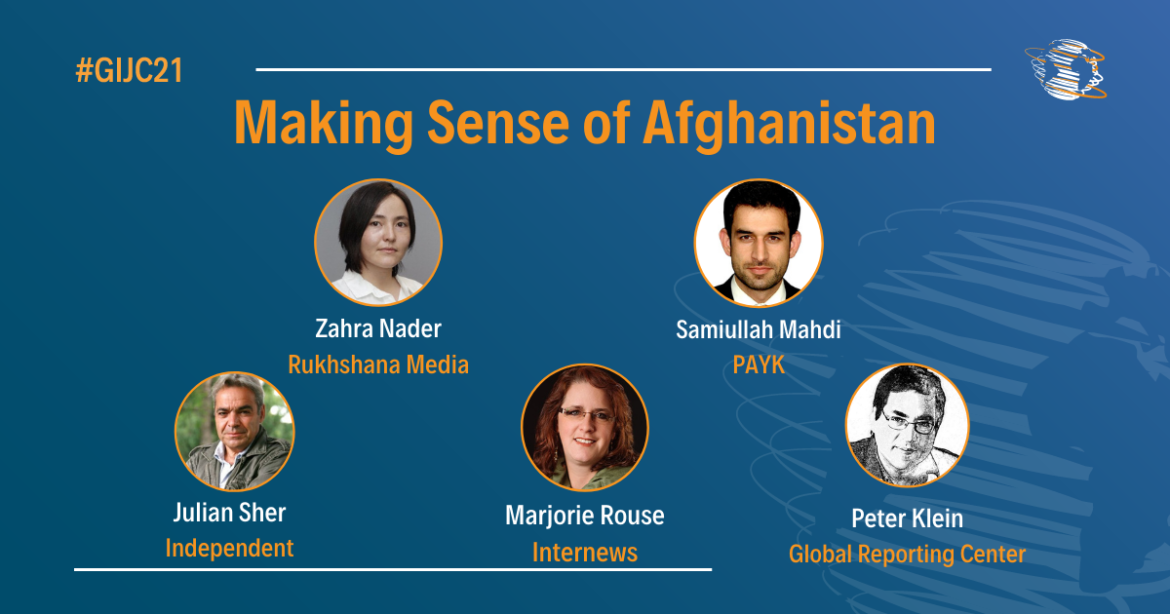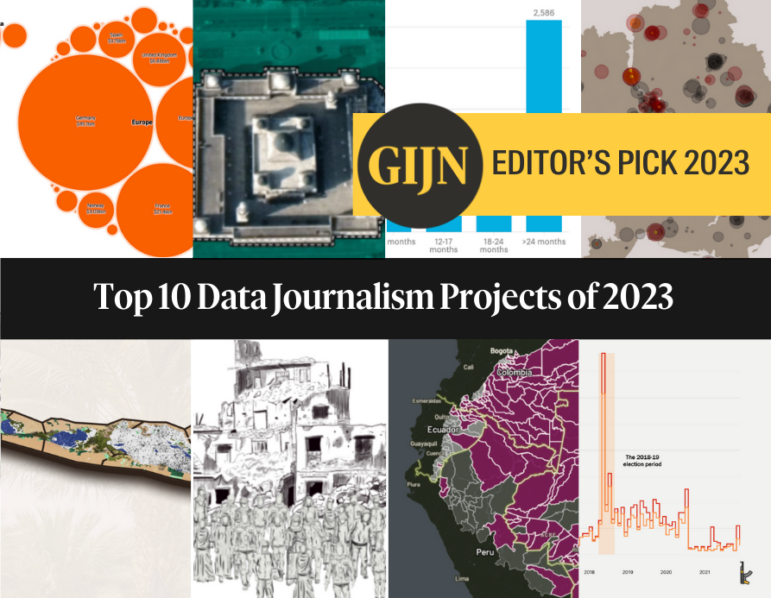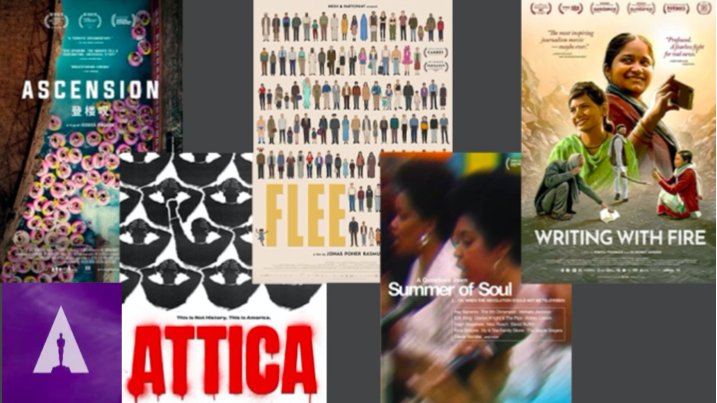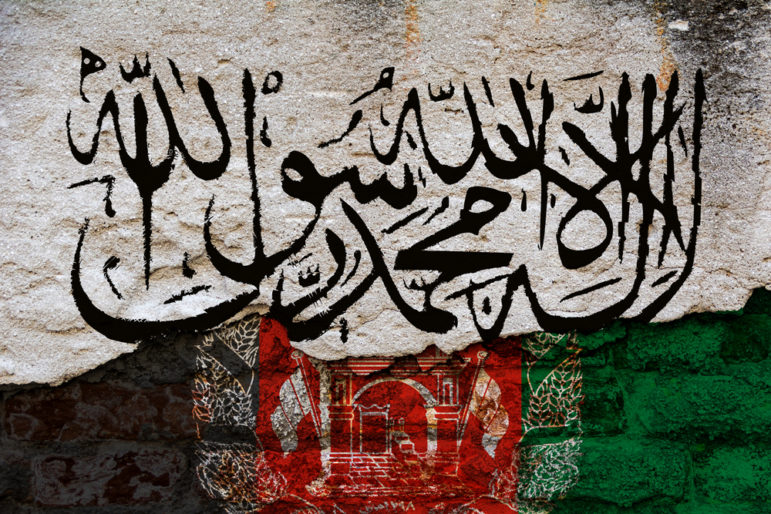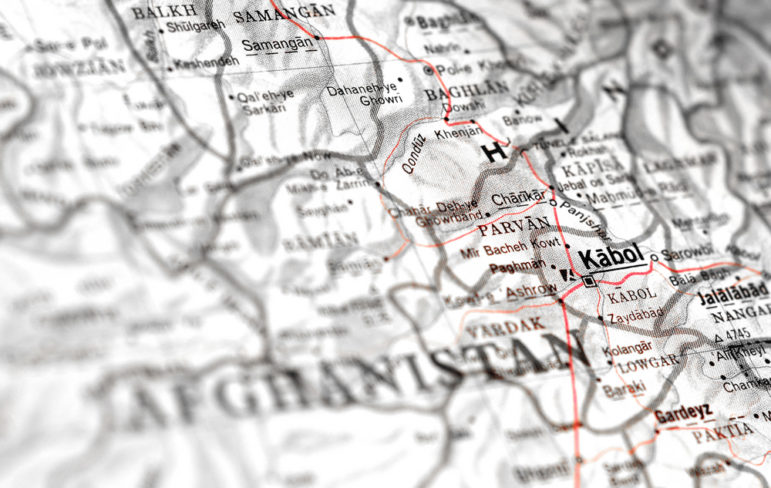

Making Sense of Afghanistan: The Failures of Coverage, and What Comes Next
For many international news outlets, the image of a C-17 aircraft taking off from the tarmac of Kabul airport — and the desperate scene as people tried to scramble on board — was the defining image of the American withdrawal from Afghanistan. But for Samiullah Mahdi, director of the country’s PAYK Investigative Journalism Center, the focus on this moment was symbolic of how Western media coverage of the 20-year war against the Taliban had faltered.
Speaking at the session “Making Sense of Afghanistan” at the 12th Annual Global Investigative Journalism Conference, Mahdi said that at the very moment that the plane was taking off, human rights violations taking place across the country were receiving scant attention, and there was even little discussion on the mismanagement of the airport itself. For him, this signified the failure of the international media to capture and tell the full story of the Afghan people.
Mahdi’s comments were echoed by Zahra Nader, a former contributor in Kabul to The New York Times and other media, and an editor for Rukhshana Media, a news outlet that focuses on Afghan women. These problems, Nader said, predated the evacuation of Kabul, and are part of a consistent failure by the international media to accurately portray Afghanistan to the world.
Throughout the war, the women of Afghanistan were endlessly painted as victims, Nader said. But in cases where women did succeed in breaking away from that stereotype of being the “downtrodden, oppressed, brutalized person,” the focus of international stories was on how the West allowed them to do this. News outlets, she noted, “don’t expect the victim to tell their own story.”
International news media “introduce my country as a misogynist country, without saying how we got there,” she added.
Canadian journalist Julian Sher, director of the documentary “Ghosts of Afghanistan,” agreed with criticisms of how the media had covered Afghanistan since the arrival of international forces in 2001. “Many people in the Western media had blinders on and became sort of cheerleaders,” he said, believing that the war in Afghanistan was a “good war” predicated on improving human rights.
This, he said, played into the idea of “our troops” — a term usually used to talk about foreign soldiers in Afghanistan — which led to a hyper-focus on the military and away from the stories of the Afghan people. For the Western media, that meant the war in Afghanistan ended when those troops left the country.
Sher said that if you draw a graph showing international news coverage of Afghanistan, the peaks occurred when more international troops were present, and coverage lowered as troops were slowly pulled out. Now that the war is thought to be “over,” he said, the fear is that coverage will reduce dramatically.
Many local journalists are still in Afghanistan despite threats to their lives, stressed Marjorie Rouse, chief programs officer at Internews, who oversaw far-reaching programs to build up independent TV and radio news outlets in the country. Those who have been able to leave the country for safer places tended to have connections with Western media.
The exodus of reporters, however, comes at a dangerous time, Rouse cautioned. As more journalists leave the country amid security fears they face operating under the Taliban regime, there is a void, just as the need to cover what is happening around the country becomes vital. Rouse called it “losing international witness”: when journalists leave or cannot do their jobs, the stories that need to be recorded or told are lost.
Uncertain Future
Mahdi stressed the need to connect those still on the ground with the journalists who have been forced to flee, to create links and spaces to collaborate so that stories from the Afghan perspective about Afghanistan can be told.
This, Mahdi said, could be done if local reporters in Afghanistan who are unable to publish certain stories because of security concerns could pass on information or leak documents to reporters based outside the country. “Twenty-three years ago when the ethnic massacre of Hazaras took place at Mazar-e-Sharif, no one documented that,” he explained. “There is a need now to document” what is happening.
One key difference between the Afghanistan of today and then, he said, is the media infrastructure. At the time of the Hazara massacre, in which as many as 2,000 people were killed by the Taliban, the media didn’t exist for most Afghans outside of Taliban-controlled radio.
But the decade before the US withdrawal saw the media flourish, and the country’s journalists were often seen as freer to operate than those in the countries it borders. Rouse pointed out how data from Reporters without Borders’ World Press Freedom Index (published before the Taliban re-took Kabul) showed Afghanistan in 122nd place, while neighboring Pakistan was at 145, and Iran at 174. Even India, dubbed the most populous democracy in the world, came in at 142.
“Media is one of the most trusted institutions in Afghanistan right after religious organizations,” said Rouse. “It did not melt away in August.”
This, along with increased use of social media in the country, might make it impossible to silence news coming out from Afghanistan — and allow Afghan journalists to bear witness to the situation that now unfolds in their country.
Read more about Rukshana Media in this August 2021 story by the Reuters Institute for the Study of Journalism, republished by GIJN.





